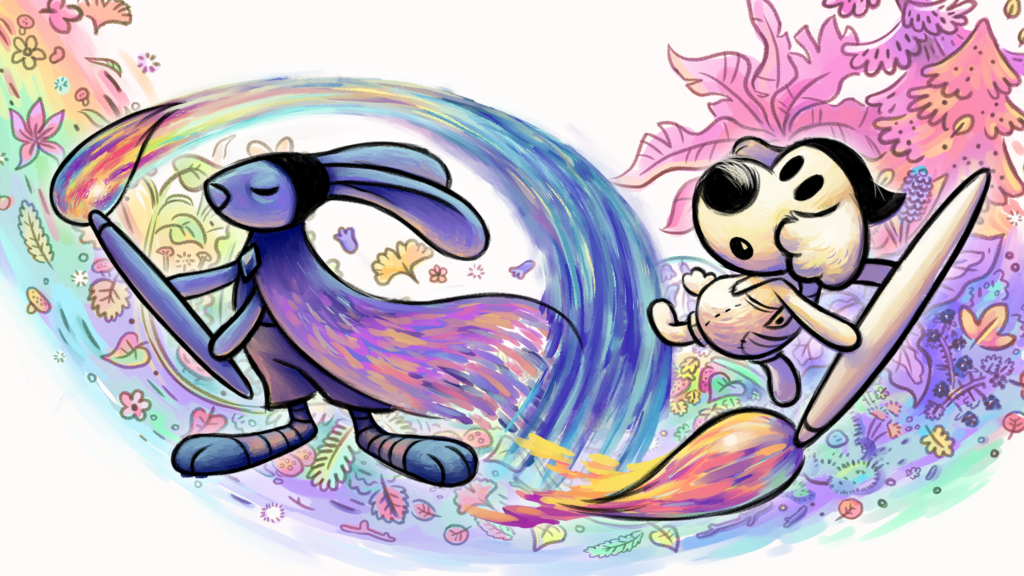
Chicory Review: A Warm and Cozy Picnic
Though almost everyone and everything in Chicory–the new game from the creators of Wandersong and Celeste–is named after food or something food-related, this is not a cooking or food-related game. In short, it’s a game about a hero’s journey abetted by a magic paintbrush. But to judge Chicory solely by its earnest charm, variety of colors, and relatively simple structure would be a mistake. The game does a lot with a little, revealing the depth of its hand in the latter half.
Our story begins as you might expect a sort of traditional hero’s journey to: the player character, a little dog you can name after your favorite food (mine was named Ice cream), is working as a janitor within a building called the Wielder Tower. If you checked out the game’s demo, you should be familiar with this section. While cleaning the world’s colors suddenly disappear and the dog finds a large paintbrush (The Brush) outside of Chicory’s bedroom in the tower. Chicory is the current wielder, so it’s immediately strange that she seems to have left the brush unattended, especially in such an emergency, but our puppy pal can’t resist taking the oversized art supply for a test drive.
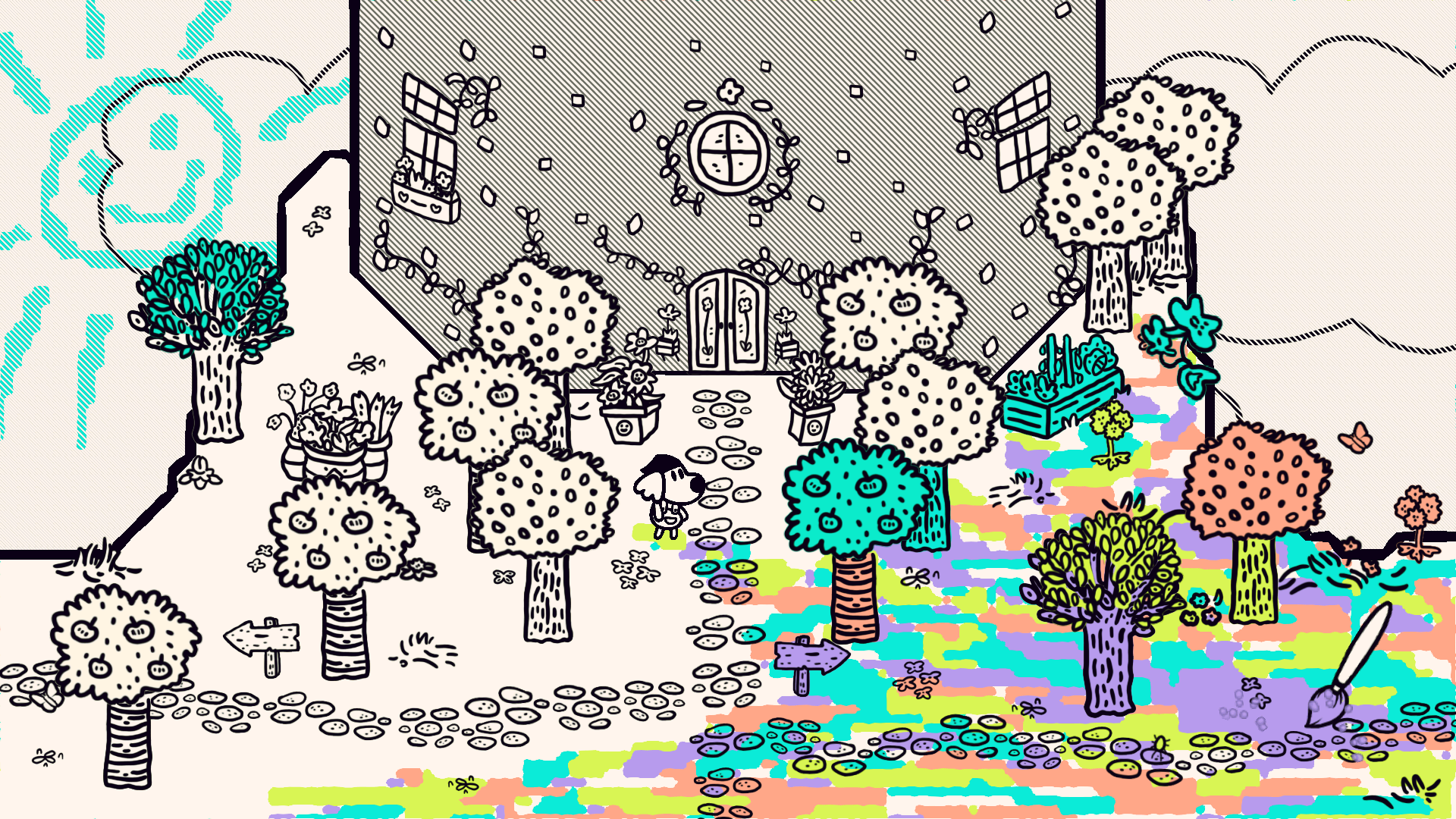
With The Brush, Ice cream (insert your character’s name here) can cover the world in color again. After exiting the tower, Ice cream heads into the woods to see if they can find Chicory’s former teacher, Blackberry. After exploring the woods, Ice cream finds Blackberry, who is livid that Chicory apparently gave The Brush away. There’s not really time to chat though, as soon Ice cream is faced with some kind of corruption monster they have to defeat.
Upon waking up, our protagonist reveals that they took The Brush, which incenses Blackberry more. She sends Ice cream back to the town of Luncheon to return The Brush to Chicory. The rabbit is clearly feeling down or not herself, but Ice cream’s excitement at the prospect of using The Brush overwhelms their sensible side, and they excitedly accept when Chicory foists The Brush onto them. It’s now their responsibility to figure out what’s going on in the province of Picnic to have made all the color disappear.
I won’t spoil beyond this point, but the rest of the game follows your character as they try to accomplish this goal. You wander around Picnic, exploring where you can and meeting the variety of citizens who live there. From former Wielders, to different local business owners, and even your character’s family, there are plenty of characters to chat with and get to know. The game explicitly encourages players to interact with characters multiple times, and it feels rewarding to do so as they will often react to things you’ve done elsewhere in the game or around town.
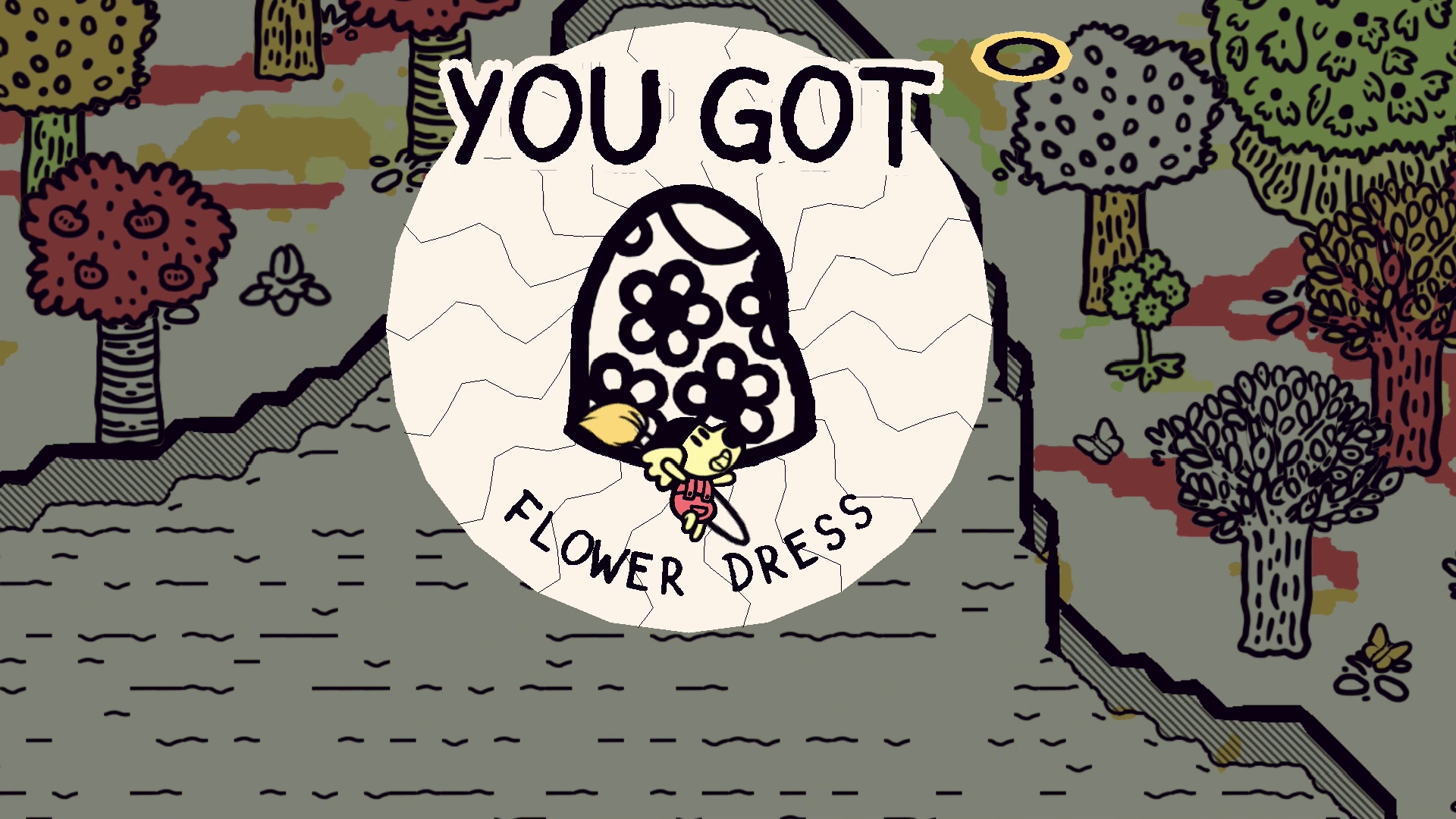
Several of these animals will provide you with little sidequests, or will introduce you to the other little side mechanics like your wardrobe or brush styles. Still others are there to explain different collectibles you can gather on your journey, including different outfits you can change at will. Some of these will be gated off by various environmental factors, and you’ll have to come back for them. Luckily, most, if not all, of the collectibles have a corresponding citizen that keeps track of them, and the areas where you still have to find them. And should you get stuck, you can always use a phone booth to call back home and have your parents give you a hand.
Chicory is somewhat like a metroidvania in its progression. While you can wander the world at your leisure, you don’t start out with all the necessary tools to navigate it freely. Instead, you have to build your bond with The Brush by completing story landmarks. Each time you make significant progress as The Wielder, you gain a new paint-based ability to help you traverse Picnic and uncover its secrets.
These new abilities are key to solving the environmental puzzles to complete story objectives and to access every collectible. Chicory’s puzzle structure is excellent in that it provides you with everything you need to get through in relatively simple packaging. While I struggled with some of the earlier puzzles, once I realized that each solution was fairly clearly mapped if I just thought about the given mechanic and what I had been shown, I was able to progress with relative ease, and I started having fun. Being able to figure out a puzzle that’s blocking your progress will always be extremely satisfying, and Chicory consistently delivers in that arena.

The end of each area you uncover ultimately ends in a boss fight, where you’re once again taught different mechanics to make it out on top. These tend to stack as you progress, so keeping past fights in mind as you move forward is definitely a solid move. That said, these battles can be as forgiving as you want them to be. Should you take several repeated hits, the game will ask if you want to increase the maximum number of blows you can take. Even if you do max out your hits, you won’t have to start the whole fight over. Instead, you’re simply knocked over for a moment before the fight picks back up again. As you progress, these battles become more complicated, reflecting the game’s overall narrative.
While nothing complex or full of twists, Chicory’s story is deeper than one might assume based solely on its prestige cartoon style artwork and vaguely silly tone. This is a game that is both sweet in its earnestness, and also brazenly honest about its characters’ flaws and weaknesses. It pulls these issues to the forefront and demands they be dealt with, no matter how difficult that may be. Though I personally didn’t find it to be an out-and-out emotional powerhouse, Chicory excels at demonstrating the humanity of its characters and storylines, despite their furry forms.
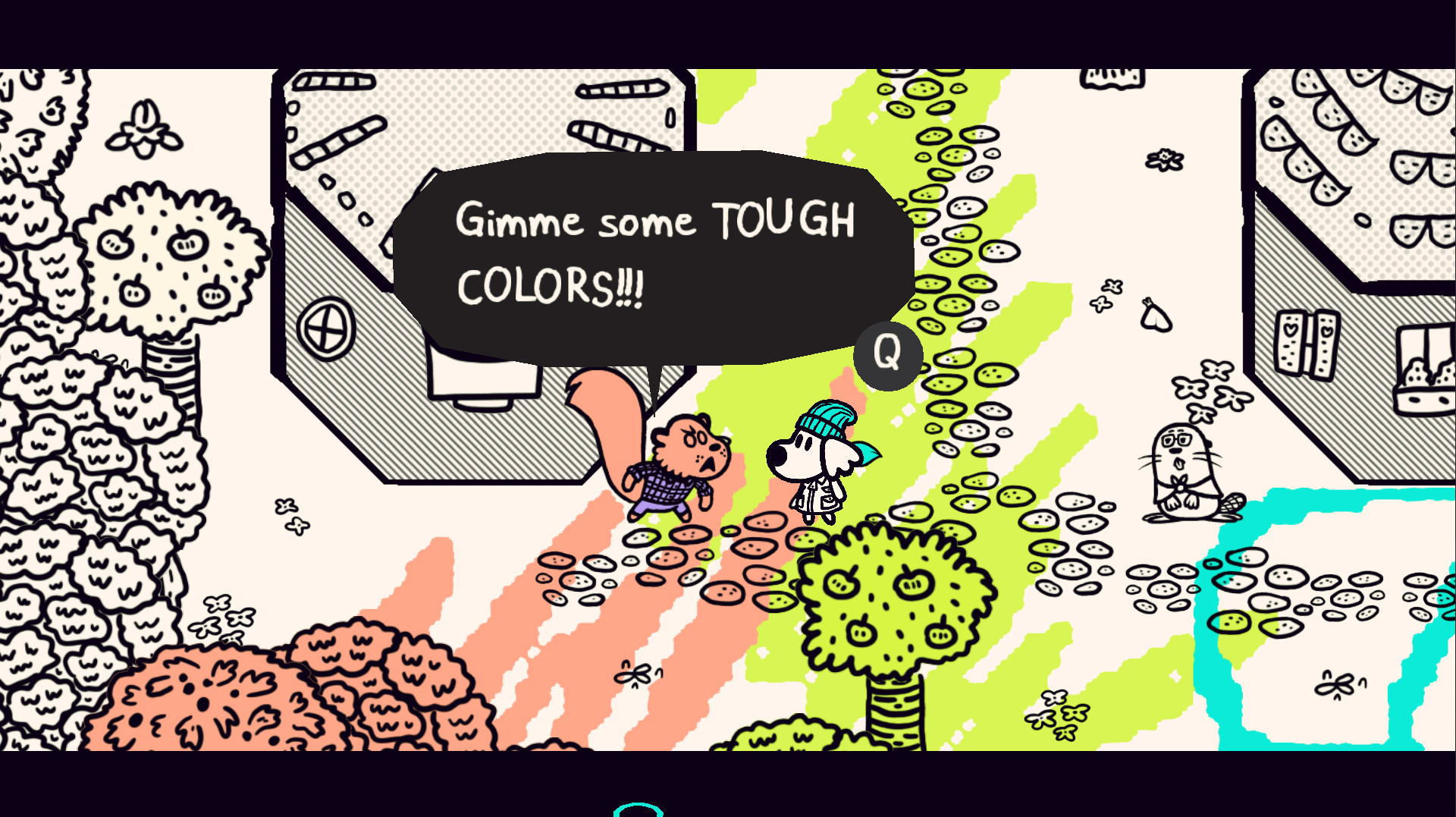
This simple-yet-powerful storytelling gains even more depth from Lena Raine’s exceptional soundtrack, which manages to encapsulate every aspect of this journey to a tee. Both the characters and the colors are made more vibrant by Raine’s music, ranging the gamut of slow, soothing strings, to heart-racing boss themes.
Overall, Chicory was not a life-changing experience. But it was one that I will think of fondly, because of its playfulness, its warmth, and its unabashed sincerity. I honestly aspire to the level of emotional honesty the main character is able to maintain. Beyond that, the game’s art, music, and writing go above and beyond to make this a truly cozy game that you can spend anywhere from 10-40 hours in, depending on how long you want to stay in the province of Picnic.





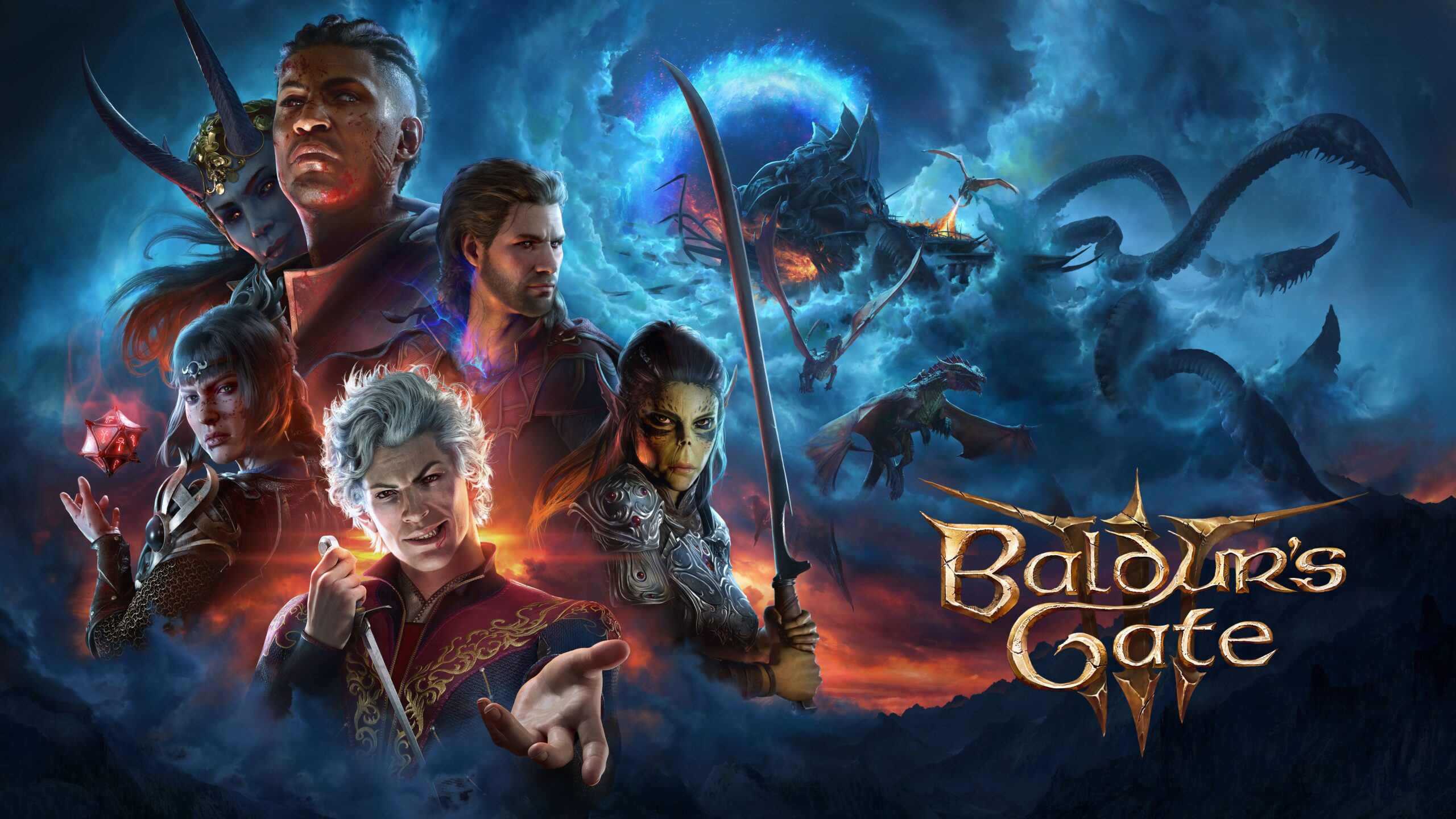
2 thoughts on “Chicory Review: A Warm and Cozy Picnic”